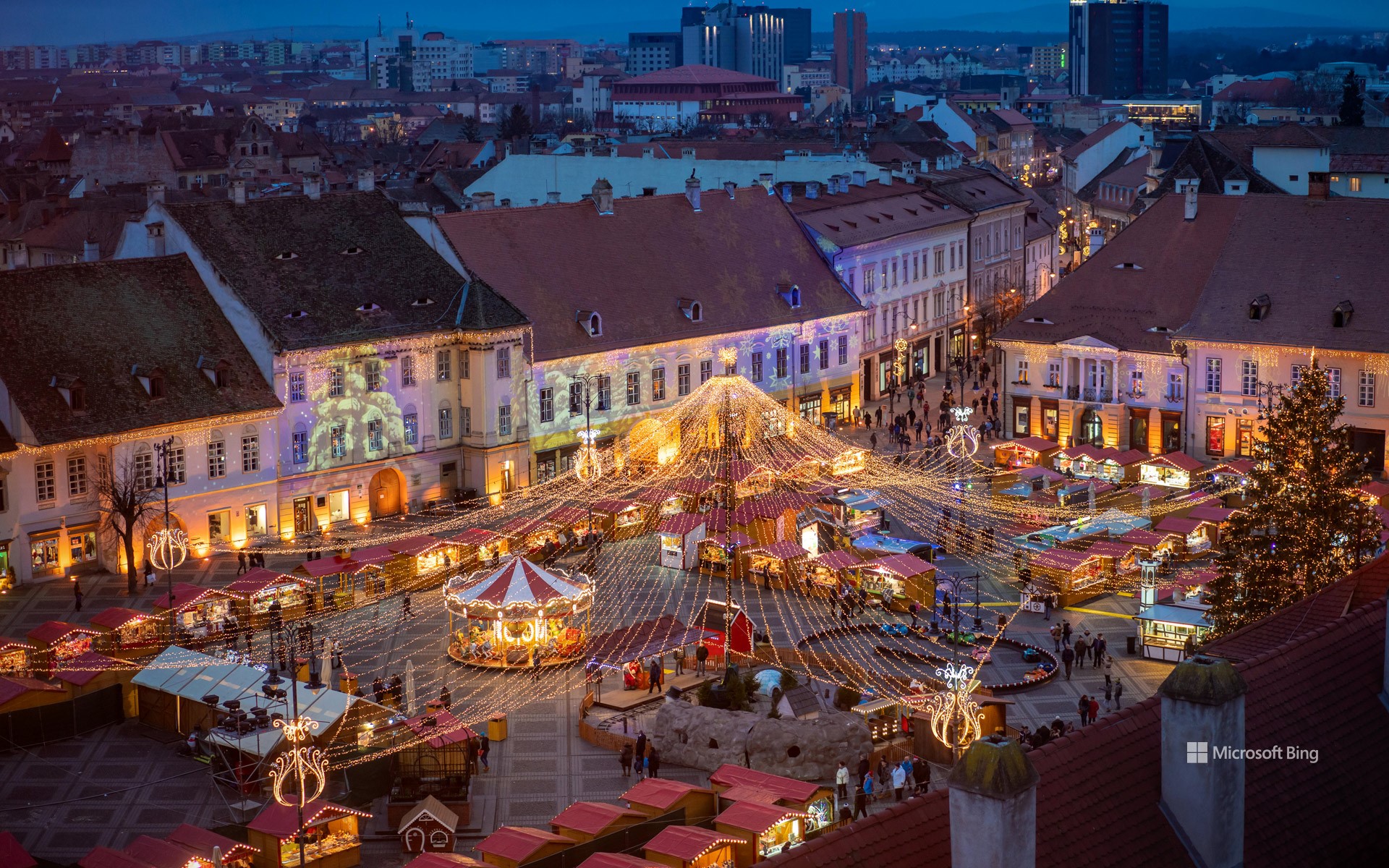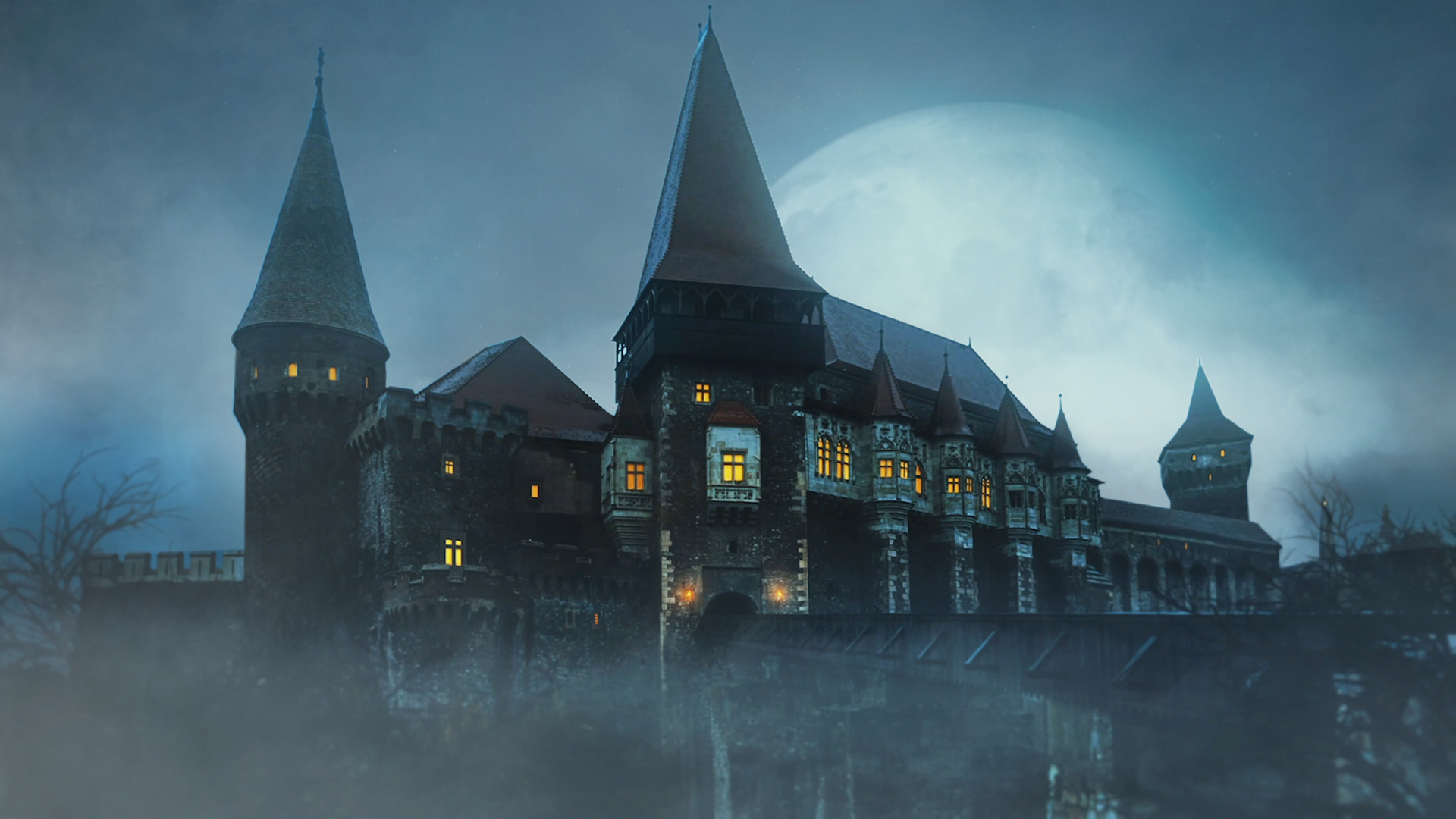布兰城堡入口, 布拉索夫, 罗马尼亚 Entrance of Bran Castle in Bran, Brașov, Romania (© blue sky in my pocket/Getty Images)
布兰城堡入口, 布拉索夫, 罗马尼亚 Entrance of Bran Castle in Bran, Brașov, Romania (© blue sky in my pocket/Getty Images)
在万圣节的魔咒之下 Under the Halloween spell
万圣节快乐!
今夜,万圣节的魔咒笼罩大地——而地球上仅有少数地方能与罗马尼亚的布兰城堡比肩,承载着如此深邃的谜团。这座建于14世纪的堡垒历经战火洗礼,见证君王更迭与帝国兴衰。但在此地,传说比历史更响亮。这座城堡坐落于以阴森传说闻名的特兰西瓦尼亚与昔日由弗拉德三世·德古拉统治的瓦拉几亚之间,散发着令人心悸的遗迹气息。弗拉德的残暴名声启发了布拉姆·斯托克1897年创作的小说《德古拉》。尽管故事背景并非布兰城堡,但它巍峨的轮廓与关于弗拉德幽灵出没的传闻,让真实与传说交织模糊,永远将这座城堡与人类最持久的传说之一紧密相连。
故事书的篇章之外,布兰城堡还低语着许多幽灵传说。据当地传闻,哀伤的白衣女子在庭院中飘荡;被封墙困住的僧侣脚步声在墙后回响;看不见的孩子们嬉闹的笑声在走廊间流转。闪烁的幽光、骤起的寒意与无形之声的传闻,更添几分不安。值此万圣之夜,布兰城堡的灵魂已超越石砌的躯壳。记忆在此扭曲成神话,现实与超自然的界限变得惊心动魄地模糊。
Happy Halloween!
Tonight, Halloween casts its spell—and only a few places on Earth carry a mystery quite like Bran Castle in Romania. The fortress was built in the 14th century and has withstood wars, monarchs, and shifting empires. But here, legends speak louder than history. Perched between the regions of Transylvania—renowned for its chilling tales—and Wallachia, once ruled by Vlad III Dracula, the castle evokes a haunting legacy. Vlad's ruthless reputation inspired Bram Stoker's 1897 Gothic novel 'Dracula.' Though the story is not set at Bran Castle, its looming form and persistent rumors of Vlad's presence blur fact and legend, forever linking it to one of humanity's most enduring tales.
Beyond the pages of storybooks, Bran Castle whispers many other haunted narratives. According to local accounts, the sorrowful White Lady drifts through the courtyard; a monk's muffled steps echo from behind the walls that sealed him in; and the playful laughter of unseen children carries through the corridors. Reports of flickering lights, sudden chills, and disembodied voices heighten the unease. On this Halloween, Bran Castle rises beyond the stones that shape it. Here, memory twists into myth, and the line between reality and the supernatural grows thrillingly thin.
锡比乌圣诞市场,罗马尼亚 Christmas market in Sibiu, Romania (© Calin Stan/Alamy Stock Photo)

锡比乌圣诞市场,罗马尼亚 Christmas market in Sibiu, Romania (© Calin Stan/Alamy Stock Photo)
闪烁的小镇 Twinkle town
罗马尼亚的锡比乌圣诞市场
随着冬季寒潮来临,锡比乌市变成了一个令人眼花缭乱的假日仙境,这里有罗马尼亚最受欢迎的圣诞市场之一。锡比乌圣诞市场从11月底到1月初在中央广场举行。在今天的图片中,一串串闪闪发光的灯悬挂在广场上,形成了一个雨棚,使鹅卵石街道沐浴在温暖的节日光芒中。那里还有一棵灯火辉煌的圣诞树,周围是迷人的木屋,售卖各种各样的东西,不仅有手工制作的装饰品,还有当地制作的点心,比如罗马尼亚传统甜面包,芳香的热葡萄酒,还有撒上盐的热脆饼。
锡比乌本身就是一个历史悠久的地方,以其保存完好的中世纪建筑、色彩缤纷的外墙和充满活力的文化景观而闻名。它曾是德国移民在12世纪建立的最富有城市,2007年被指定为欧洲文化之都。在圣诞节期间,锡比乌的光芒更加明亮,旋转木马,溜冰场和各种表演使这座城市充满活力。
Sibiu Christmas market, Romania
As the winter chill sets in, the city of Sibiu transforms into a dazzling holiday wonderland as it hosts one of Romania's most popular Christmas markets. The Sibiu Christmas Market, known in Romanian as Târgul de Crăciun din Sibiu, is held in the central square from the end of November until early January. Sparkling strings of lights drape across the square, seen in today's image, creating a canopy that bathes the cobblestone streets in a warm, festive glow. There also stands a beautifully lit Christmas tree, surrounded by charming wooden huts selling everything from handcrafted ornaments to locally made treats like cozonac, a traditional Romanian sweet bread; vin fiert, an aromatic mulled wine; and covrigi, a type of pretzel served warm and sprinkled with salt.
Sibiu itself is a place steeped in history, known for its well-preserved medieval architecture, colorful facades, and vibrant cultural scene. Once the wealthiest city founded by German settlers in the 12th century, it was designated the European Capital of Culture for 2007. During the Christmas season, Sibiu shines even brighter, with carousels, ice skating rinks, and performances that bring the city to life.
罗马尼亚克卢日-纳波卡国家剧院 National Theater, Cluj-Napoca, Romania (© Thomas Mueller/Shutterstock)

罗马尼亚克卢日-纳波卡国家剧院 National Theater, Cluj-Napoca, Romania (© Thomas Mueller/Shutterstock)
欣赏建筑奇迹 Behold the architectural marvel
罗马尼亚克卢日-纳波卡国家剧院
卢西安·布拉加国家剧院位于罗马尼亚城市克卢日-纳波卡,是该地区的文化标志。那里的表演展示了基于进步和国际趋势的古典和当代匈牙利戏剧。这座富丽堂皇的剧院是以19世纪晚期流行的新巴洛克风格建造的,它唤起了巴洛克运动的宏伟、色彩和细节,旨在让任何进入空间的人眼花缭乱。它是罗马尼亚的三个国家剧院之一,与布加勒斯特国家剧院和Iași国家剧院并列。
National Theater, Cluj-Napoca, Romania
The Lucian Blaga National Theater, located in the Romanian city of Cluj-Napoca, is a cultural icon of the area. Performances there showcase classical and contemporary Hungarian dramas based on progressive and international trends. The opulent theater was built in the Neo-Baroque style, popular in the late 19th century, which calls back to the grandiosity, color, and detail of the Baroque movement that aims to dazzle anyone who enters the space. It is one of three national theaters in Romania, alongside National Theater Bucharest and Iași National Theater.
布拉索夫中央广场的圣诞市集,罗马尼亚 Christmas Market in Main Square of Braşov, Romania (© Alpineguide/Alamy)

布拉索夫中央广场的圣诞市集,罗马尼亚 Christmas Market in Main Square of Braşov, Romania (© Alpineguide/Alamy)
A Carpathian Christmas celebration
Nestled at the foot of Mount Tampa in the southern Carpathian Mountains of Romania, Brașov is a wonderful example of medieval Europe's intersecting cultures. Founded by Teutonic Knights, settled by Saxons and Hungarians, influenced by the Ottoman Empire, the Tartars, and the native Romanians, the city's Gothic architecture and unique cuisine reflect its rich history. The city's Christmas market is held throughout the month of December and is dominated by a 90-foot-tall, live Christmas tree. The market's numerous stalls feature food, drink, and local crafts.
The festival is known as 'Braşov—the city from the tales,' perhaps because legend has it that this square is where the children of Hamelin emerged after being led away by the Pied Piper. However you arrive, it's a magical place to drink a cup of cheer and toast to your Romanian hosts with a hearty 'Noroc!' But even if you're keeping it local this year, it's easy to be warmed even by the image of this golden glow from 'the city from the tales.'
喀尔巴阡山的圣诞庆典
布拉索夫坐落在罗马尼亚喀尔巴阡山脉南部坦帕山脚下,是中世纪欧洲文化交融的一个极好的例子。由条顿骑士建立,撒克逊人和匈牙利人定居,受到奥斯曼帝国、鞑靼人和罗马尼亚土著人的影响,这座城市的哥特式建筑和独特的美食反映了它丰富的历史。这座城市的圣诞集市在整个12月举行,以一棵90英尺高的活圣诞树为中心。市场上有很多摊位,有食品、饮料和当地工艺品。
这个节日被称为“传说中的城市”,也许是因为传说这个广场是哈梅林的孩子们在被派笛手领走后出现的地方。不管你到了哪里,这里都是一个神奇的地方,你可以在这里喝上一杯干杯,并用一口热情洋溢的“诺洛克”为你的罗马尼亚东道主干杯。但即使你今年把它保留在当地,也很容易被“传说中的城市”发出的金色光芒所温暖。
堡垒山上的珀纳里城堡,法加拉斯山,罗马尼亚 Poenari Castle on Mount Cetatea, Făgăraș Mountains, Romania (© porojnicu/Getty Images)

堡垒山上的珀纳里城堡,法加拉斯山,罗马尼亚 Poenari Castle on Mount Cetatea, Făgăraș Mountains, Romania (© porojnicu/Getty Images)
A castle fit for a count
Peeking out above the trees in the Făgăraș Mountains of Romania is Poenari Castle, an ancient structure whose reputation is steeped in history and legend. In the 15th century this castle was occupied by the notoriously ruthless ruler Vlad III, aka Vlad the Impaler, aka Vlad Dracula. Vlad wasn't a vampire, but he was known for treating his enemies with particular cruelty. His bloody resistance to Ottoman encroachment would make him a national hero and the subject of much folklore, some of it gruesome. These tales are likely what inspired author Bram Stoker to name his fictional vampire Count Dracula.
Poenari Castle continued to be used following Vlad's death in 1476 but was abandoned decades later. It fell into ruin over the centuries, as earthquakes and landslides sent parts of the building down the cliff and into the Argeș River below. Visiting the ruins today requires determination and stamina—it's a 1,480-step climb to the citadel walls, unless you're able to take the form of a bat and fly to the top.
万圣节快乐!科尔温城堡,罗马尼亚 Corvin Castle, Romania (© Audio: Chris Haigh/Shutterstock | Video: DCPmedia/Shutterstock)

万圣节快乐!科尔温城堡,罗马尼亚 Corvin Castle, Romania (© Audio: Chris Haigh/Shutterstock | Video: DCPmedia/Shutterstock)
Protect your neck
Happy Halloween boos and ghouls! We hope our vampire wasn't too scary on this day designed for spooky delights. The fortress in our image is Corvin Castle in Romania—not far from Transylvania, a real historical region in Romania. In Bram Stoker's novel 'Dracula' the ghoulish count lives in a remote Transylvanian castle, cementing the place in popular imagination as the home of Count Dracula. Be careful out there tonight as you go haunting for treats, and keep reminding yourself: There's no such thing as vampires…
特兰西瓦尼亚的川斯发格拉山公路,罗马尼亚 The Transfăgărășan in Transylvania, Romania (© Calin Stan/Shutterstock)

特兰西瓦尼亚的川斯发格拉山公路,罗马尼亚 The Transfăgărășan in Transylvania, Romania (© Calin Stan/Shutterstock)
Keep calm and drive on (slowly)
The Transfăgărășan in Romania is open for business. Also known as the DN7 highway, the road cuts through the Fagaras Mountains, offering stunning views of waterfalls, glacial lakes, and lush valleys—plus steep drop-offs and hairpin turns to amp up the drama. Back in 2009, Jeremy Clarkson, co-host of the British TV show 'Top Gear,' called this twisty route the 'best road in the world,' which helped turn it into a major tourist draw. The Transfăgărășan reaches elevations just shy of 6,700 feet and has more tunnels and viaducts in its 55 miles than any other road in this mountainous country. But proceed with caution. The speed limit is a sensible 25 mph. And watch out for herds of sheep that use it as a path to greener pastures, and don't mind blocking traffic as they amble there.
